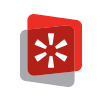A desired action. An anticipated outcome. These are just a couple of statements to describe what’s at the core of every marketing strategy. It’s how to turn these statements into actionable and measurable components that help define a business’ success. So what is conversion rate?
In digital marketing, conversion rate is a widely used metric. Conversion rate is defined as the number of conversions divided by the number of visitors (clicks). A conversion can take the form of a variety of actions:
- Completing a purchase
- Adding an item to your shopping cart
- Submitting a form providing information about the user
- Clicking on a “Learn More” button to find out more information about the product or service offered
It’s not enough to define what a conversion is. We need to dive deeper and look at the conversion rate itself. A higher conversion rate means more visitors are fulfilling your marketing goals. There are a few reasons why it’s important to measure this type of action:
- Maintain account congruency. By aligning your keywords, ads, and ad copy with the end result, the visitor will likely be more inclined to convert as they are being led to what they were searching.
- Finding themes. By measuring the conversion rate, it could provide a resource to see which keywords are more profitable than others.
We could get into a whole other topic on Conversion Rate Optimization, or CRO. Conversion Rate Optimization is the process of analyzing aspects of a landing page or shopping cart and testing the components of the page to figure out how visitors react and what can be changed or updated to increase the conversion rate.
A desirable outcome becomes a theme in a marketing plan. Measuring conversion rate is just one way to provide the direct actions of a visitor and develop actionable insights.



